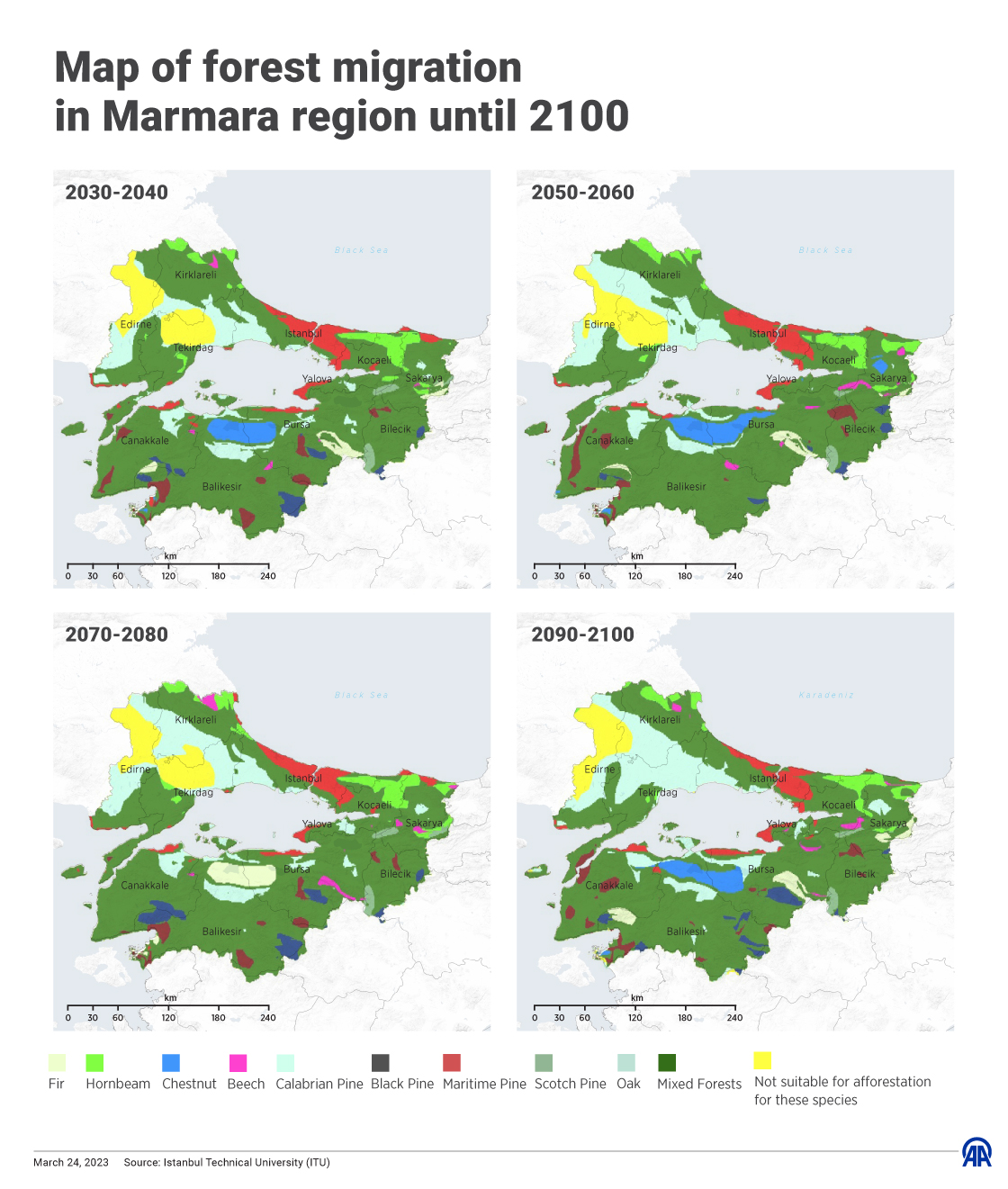ISTANBUL
Türkiye on Friday released a map of the projected distribution of trees and the migration of forests around the country’s internal Marmara Sea until the end of this century.
The initiative was part of a project carried out to explore the potential of the northwestern forests in the Marmara region to adapt to climate change.
About 3 million hectares (7.4 million acres) of forestland in the Marmara region, according to the findings of the project launched in 2019 by the General Directorate of Forestry.
It forecasts the changes that may unfold in the forest cover through time via a geographical information system.
Speaking to Anadolu, Marmara Forestry Research Institute chief Mehmet Ozdemir said the main aim was to analyze the impact of climate change on forests and develop appropriate adaptation strategies.
Ozdemir and his team are working on eight primary tree species, namely larch, red pine, oak, fir, beech, hornbeam, chestnut, and linden.
“Assuming that the Marmara Region will be a little drier in the future, we anticipate that some drought-tolerant plants may move a little further north,” he said.
In the projections that they made for 2100, Ozdemir said minor cases of northward forest migration are expected in the Marmara area.
“For instance, Calabrian pine trees (native to the Mediterranean) will tend to move a little north. Also, tree species, such as firs, that need a high degree of precipitation or humidity, may reach higher heights where they can find more water.”
Mixed-species forests adapt more easily to climate change
Ozdemir said that the team prepared forecasts of tree species distribution across 2030, 2050, 2070, and 2100 under various climate scenarios.
“We can reveal that mixed-species (forests) adapt more easily to climate change and are less affected by it.”
He underlined that therefore, monodominant forests, or forests where most trees are of a single species, may not be as resilient to climate change.
“In our studies and scenarios, we have demonstrated which species can endure at what level and whether their (population) will decrease by 2100,” he added.
On possible forest preservation measures amid the changing climate, Ozdemir said, new plants and tree species not native to the region could be introduced, along with interventions involving road or forest maintenance that take climate change into account.
He also stressed the importance of interdisciplinary research to ensure the sustainability of forests.
Ozdemir also said the institute planned to conduct a study on the adaptation of forests in Türkiye to climate change within an EU project.
The project, carried out in cooperation with the French Development Agency (FDA) and France’s National Forests Office (ONF), was completed early this year, with experts examining species across the Marmara region for their adaptation to climate change.
Academics from across northern Türkiye also contributed to the project.


